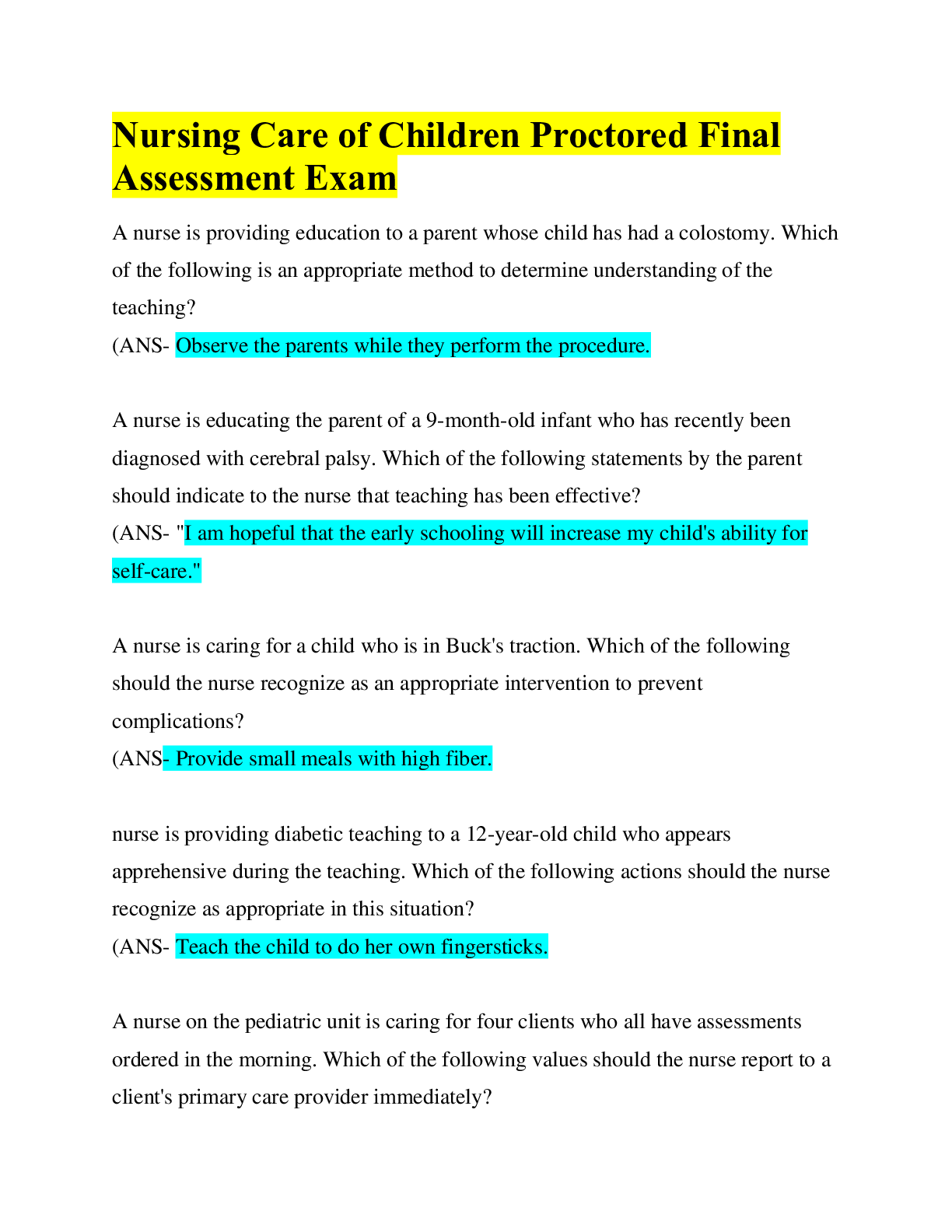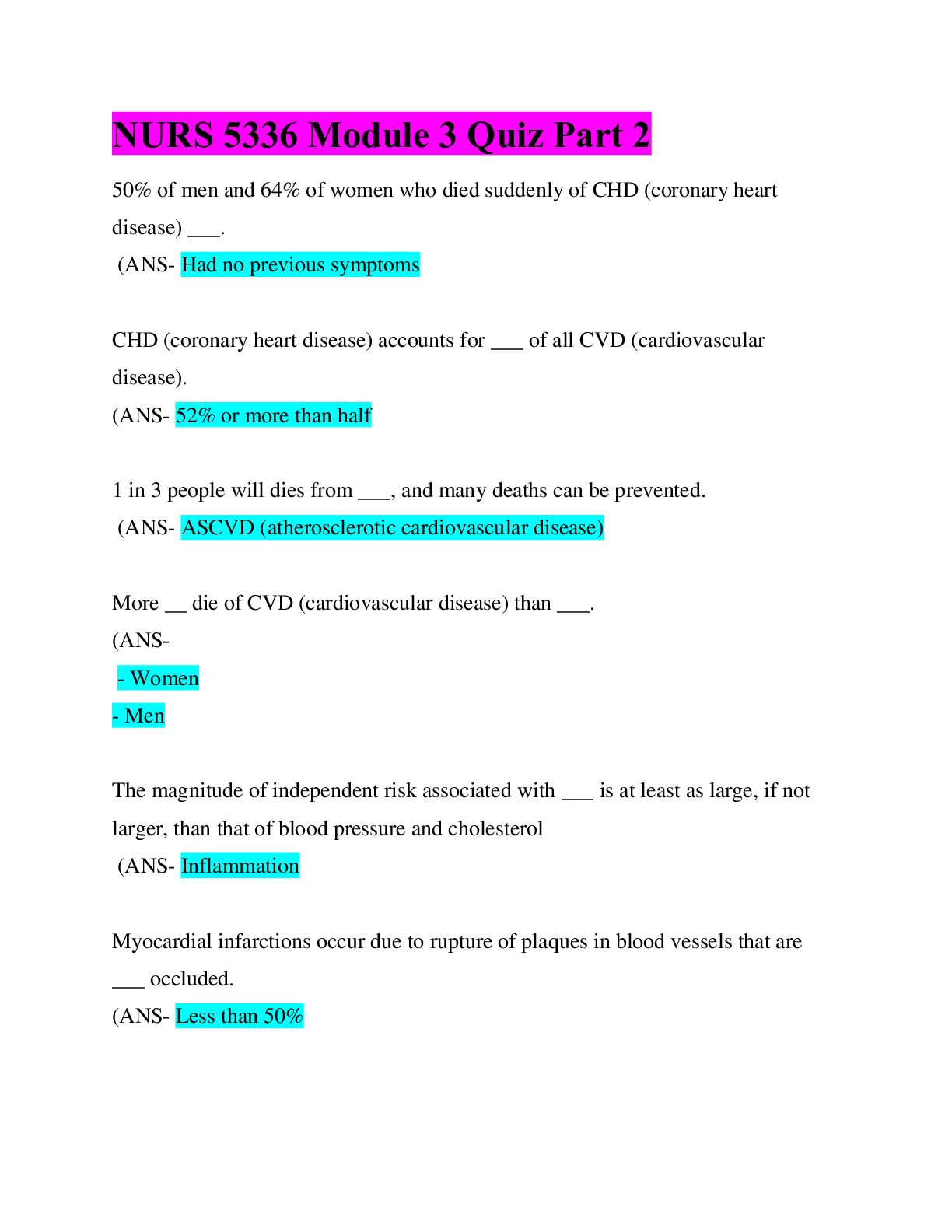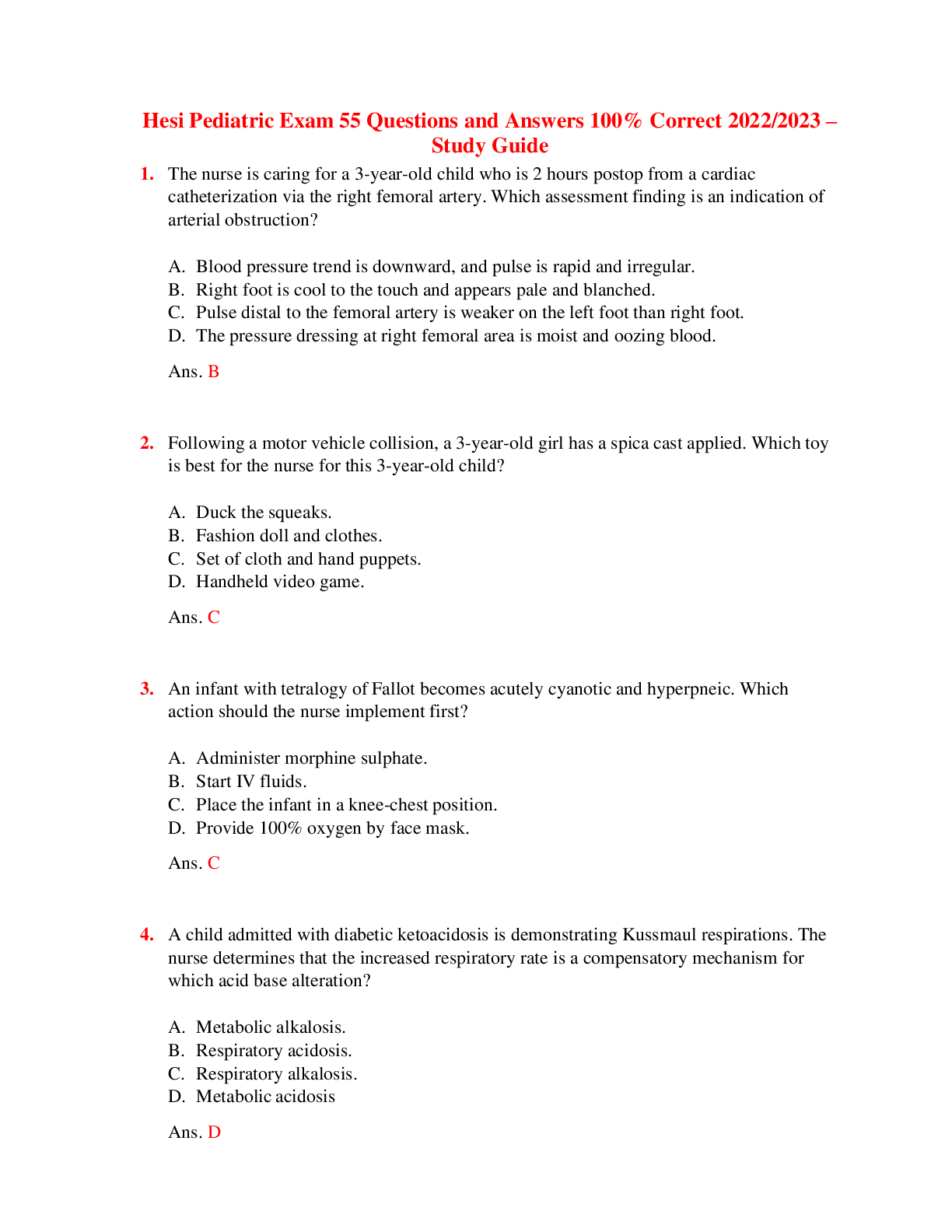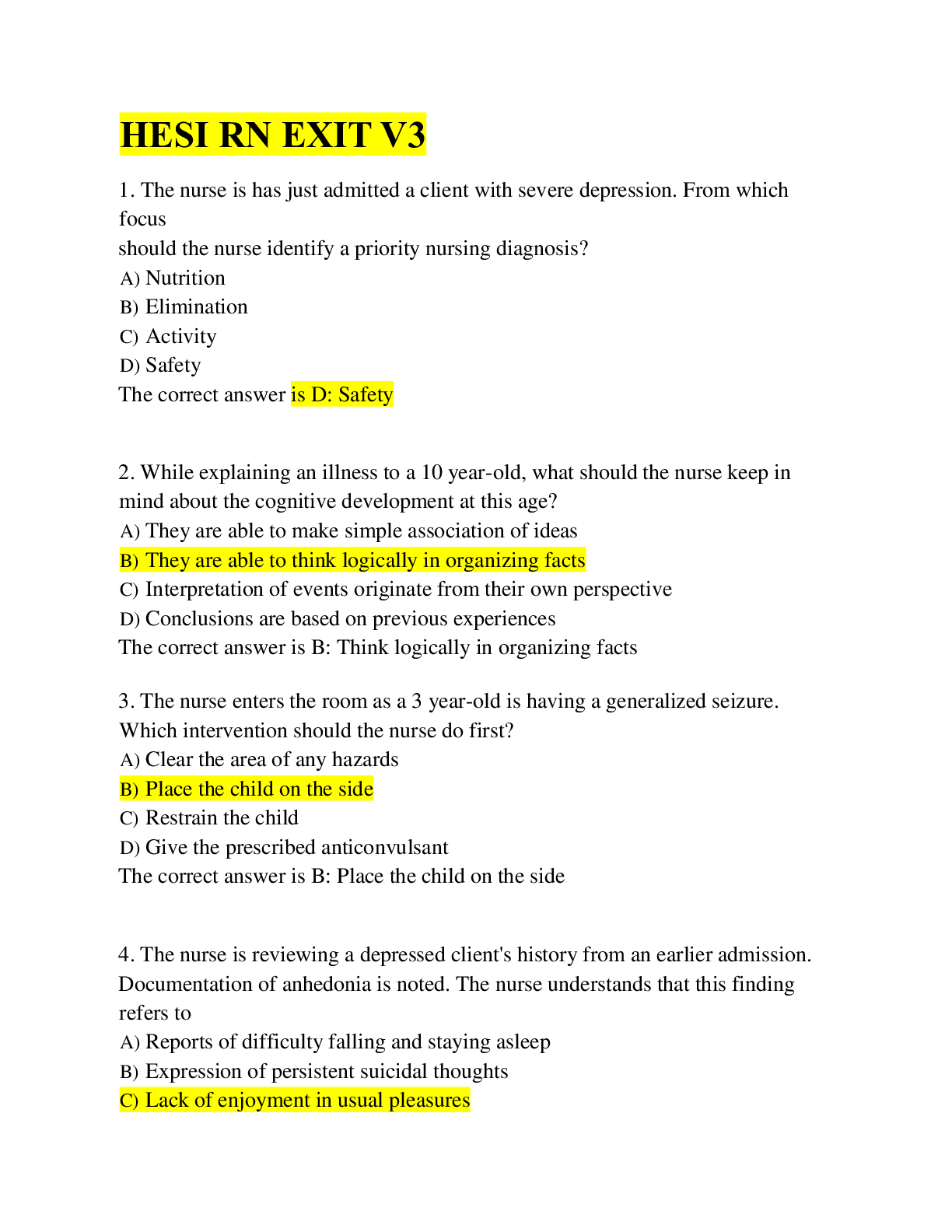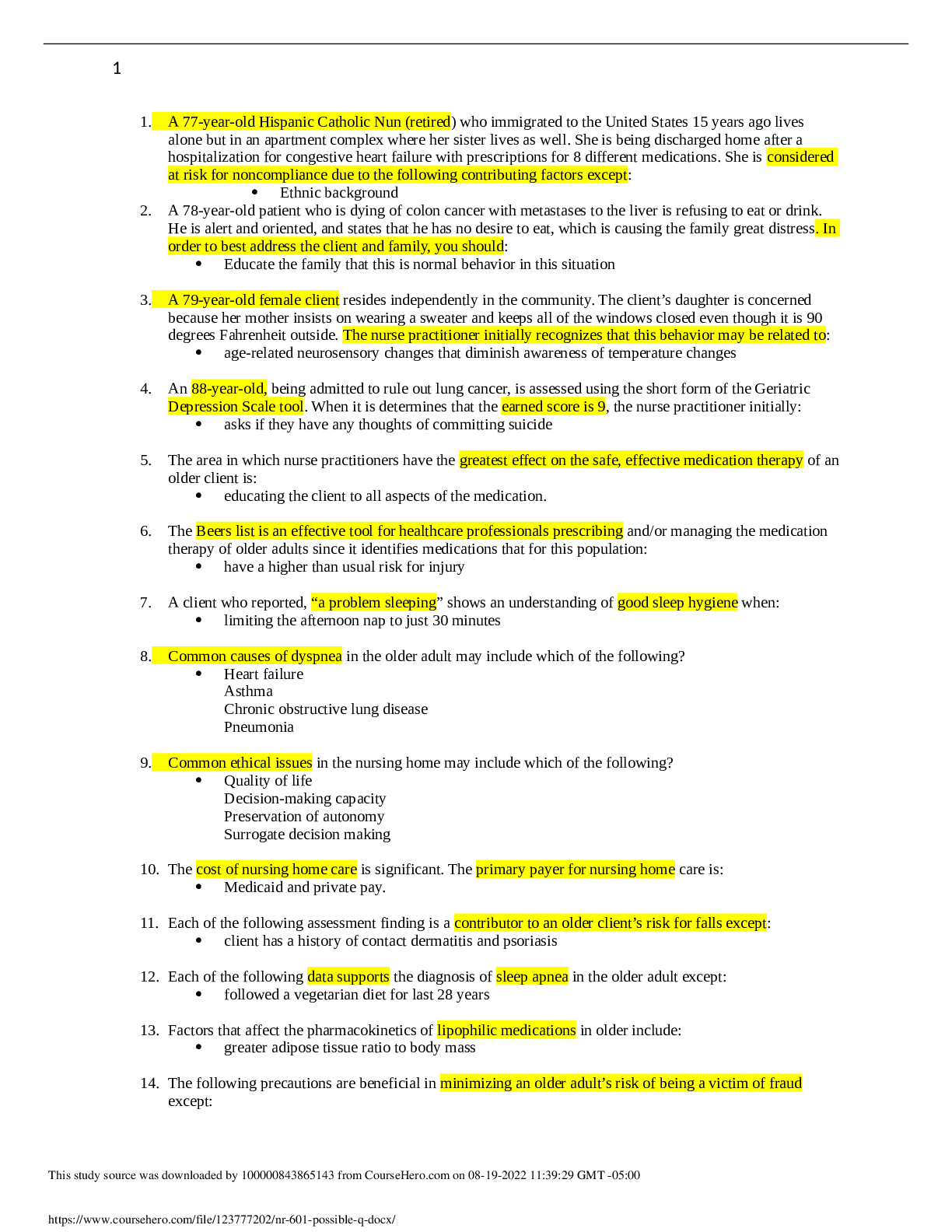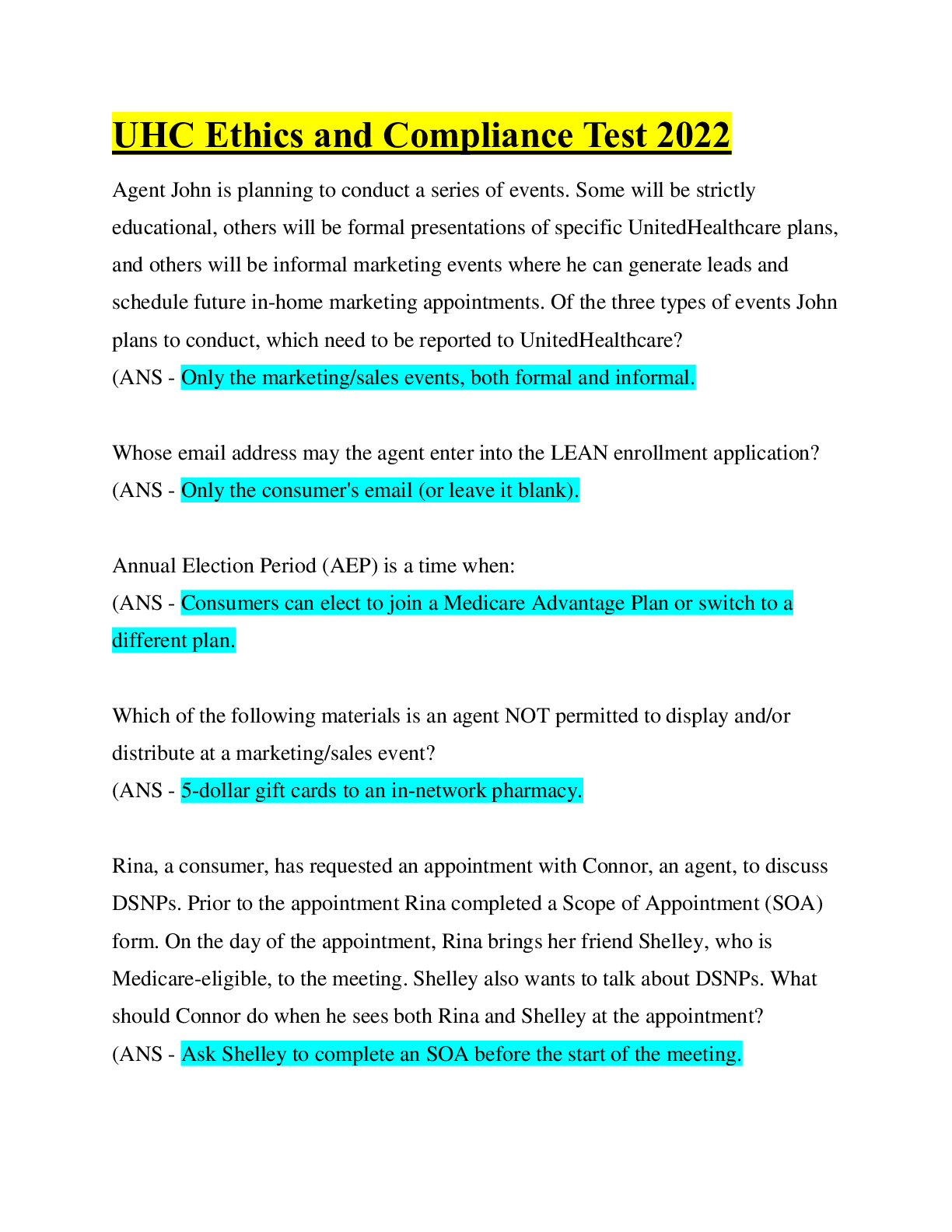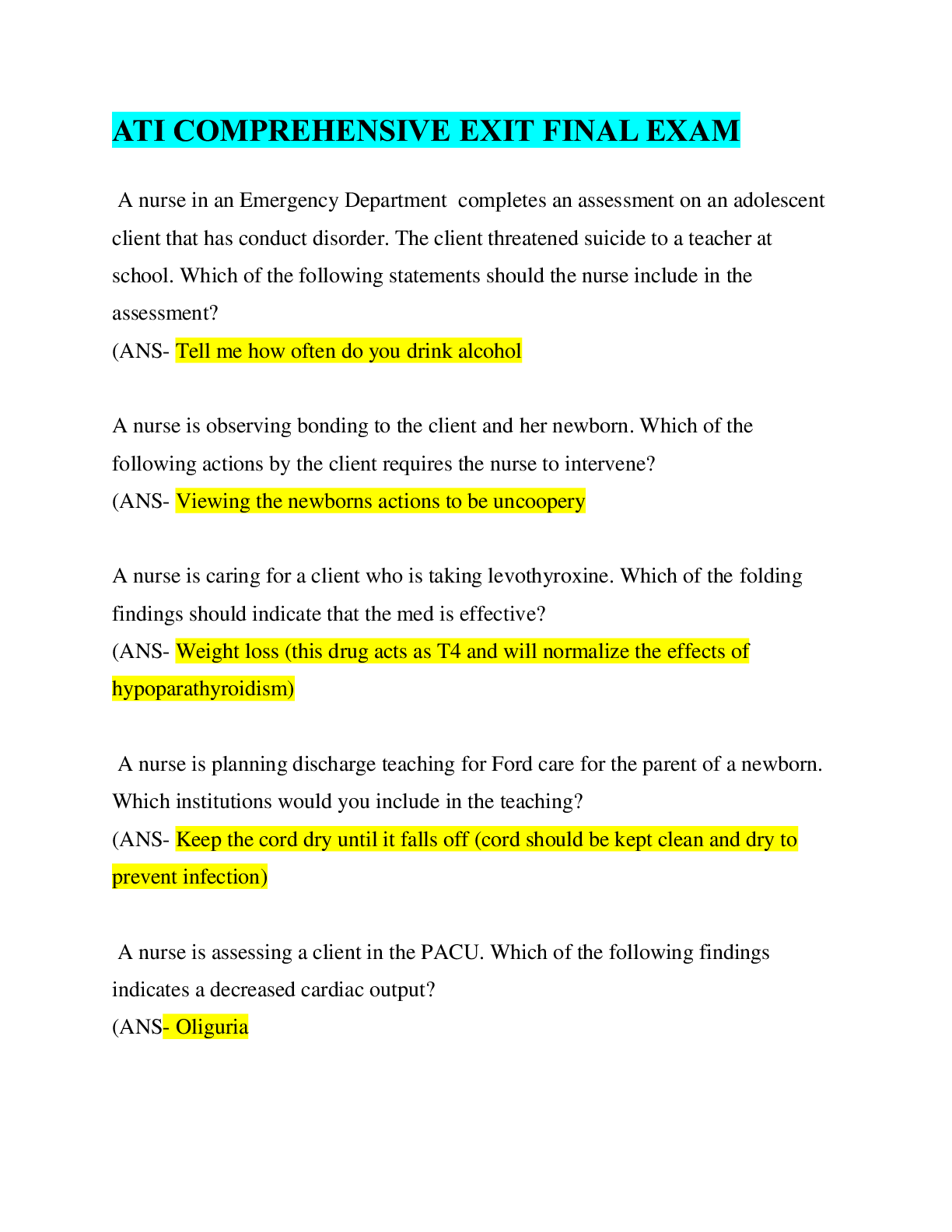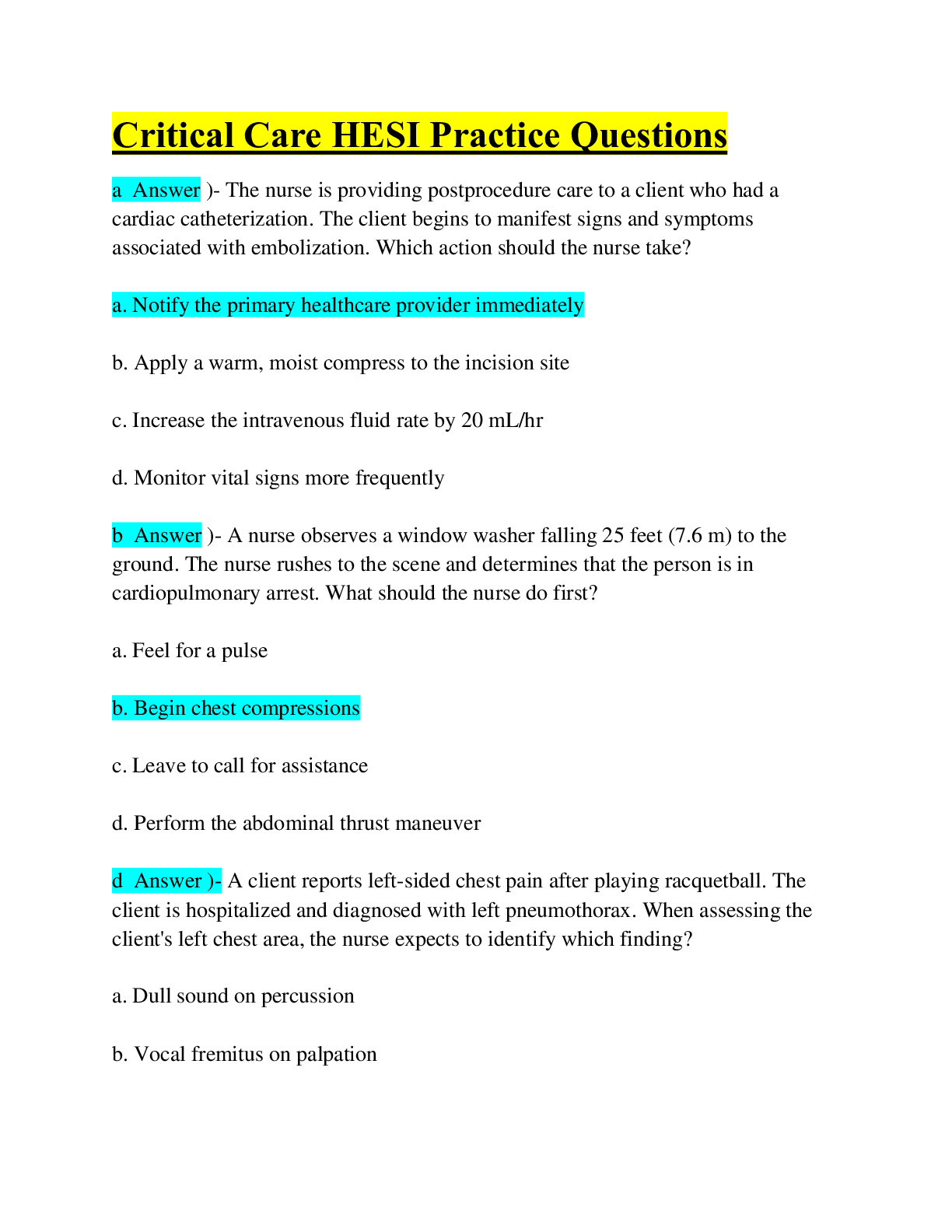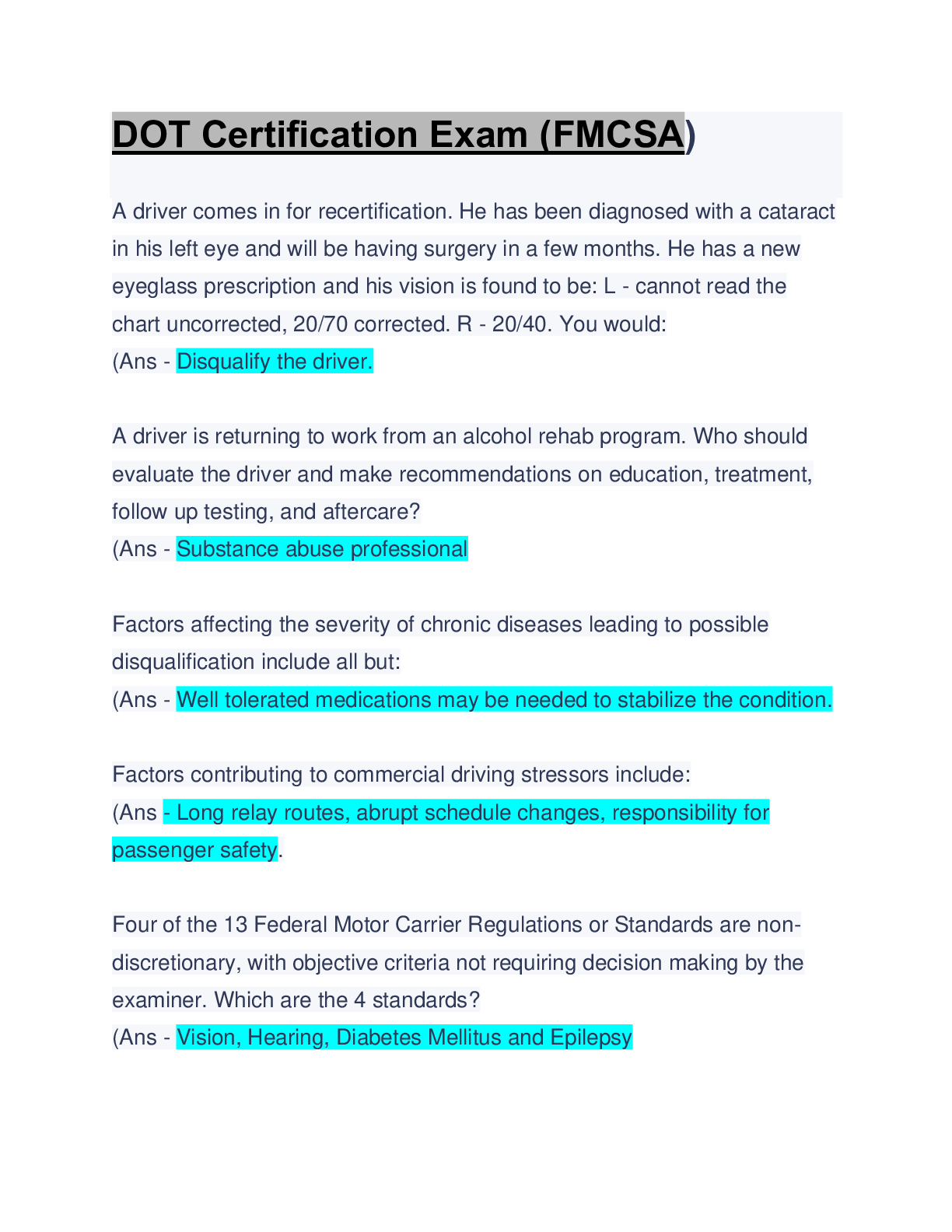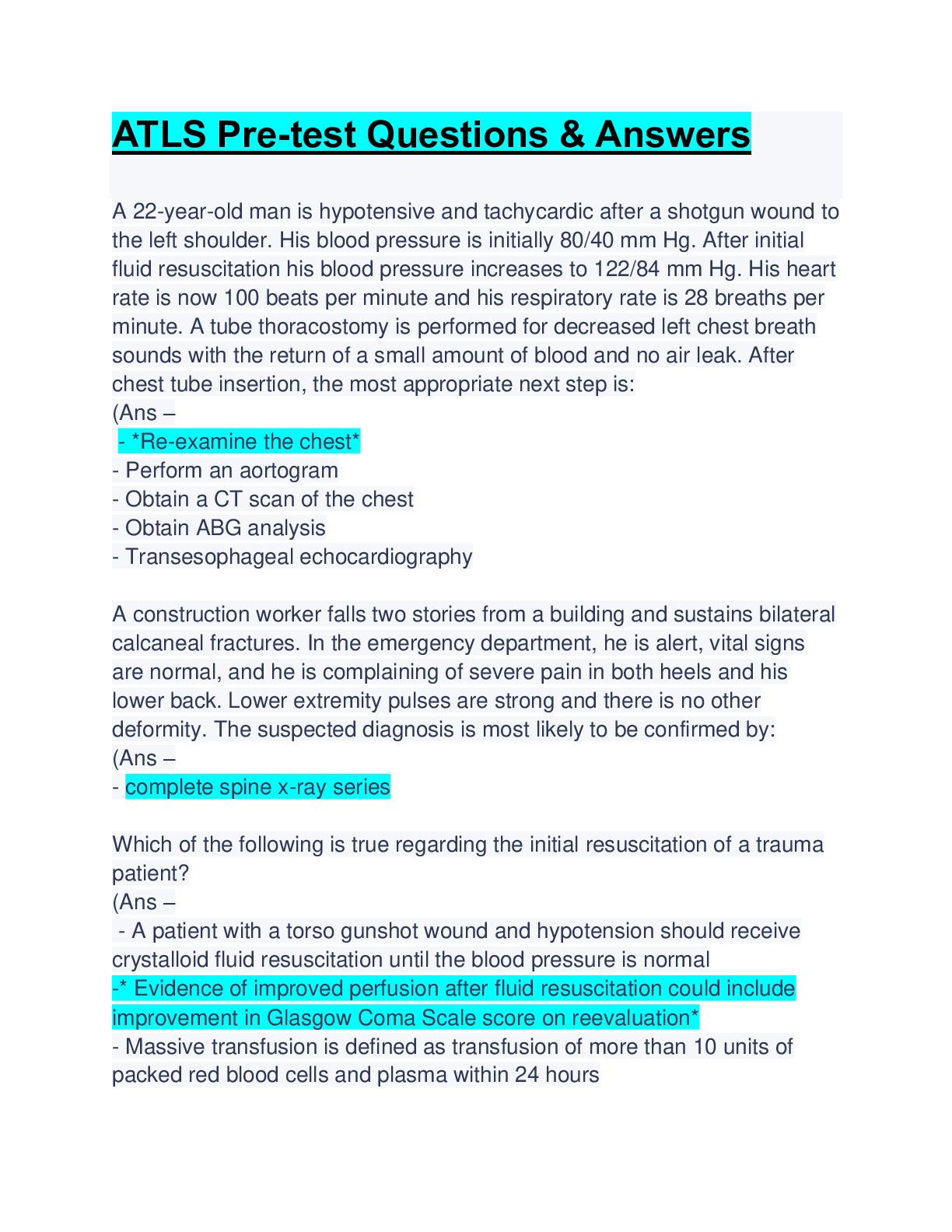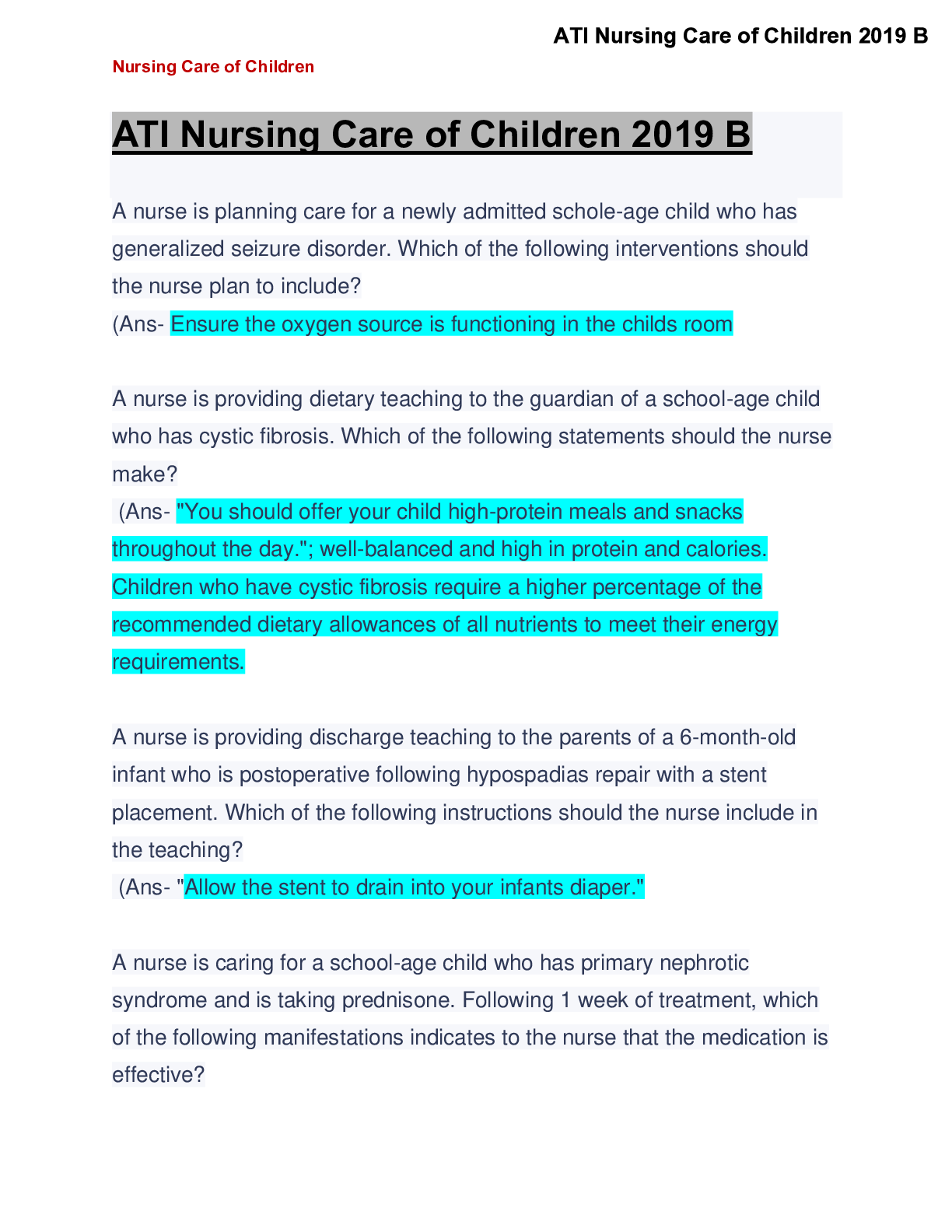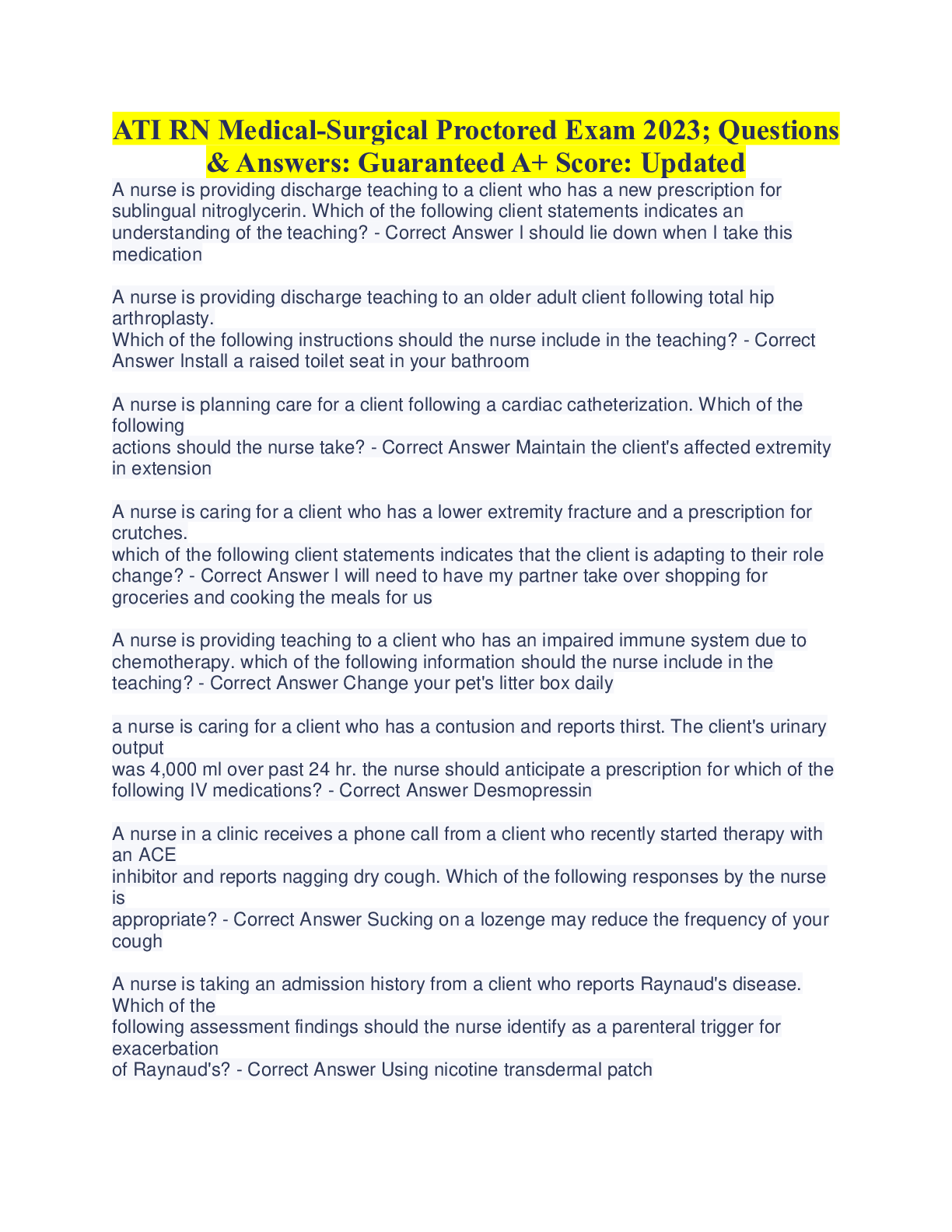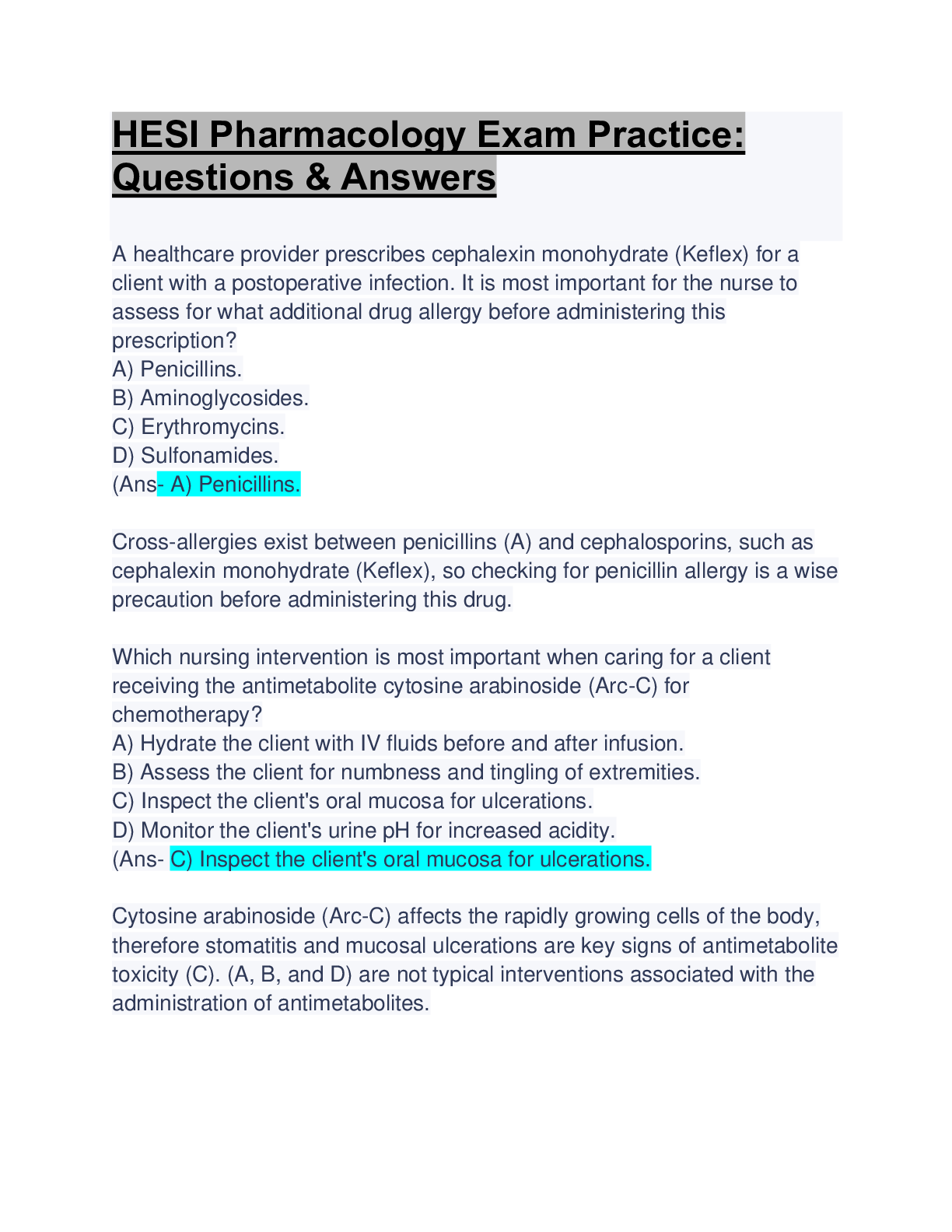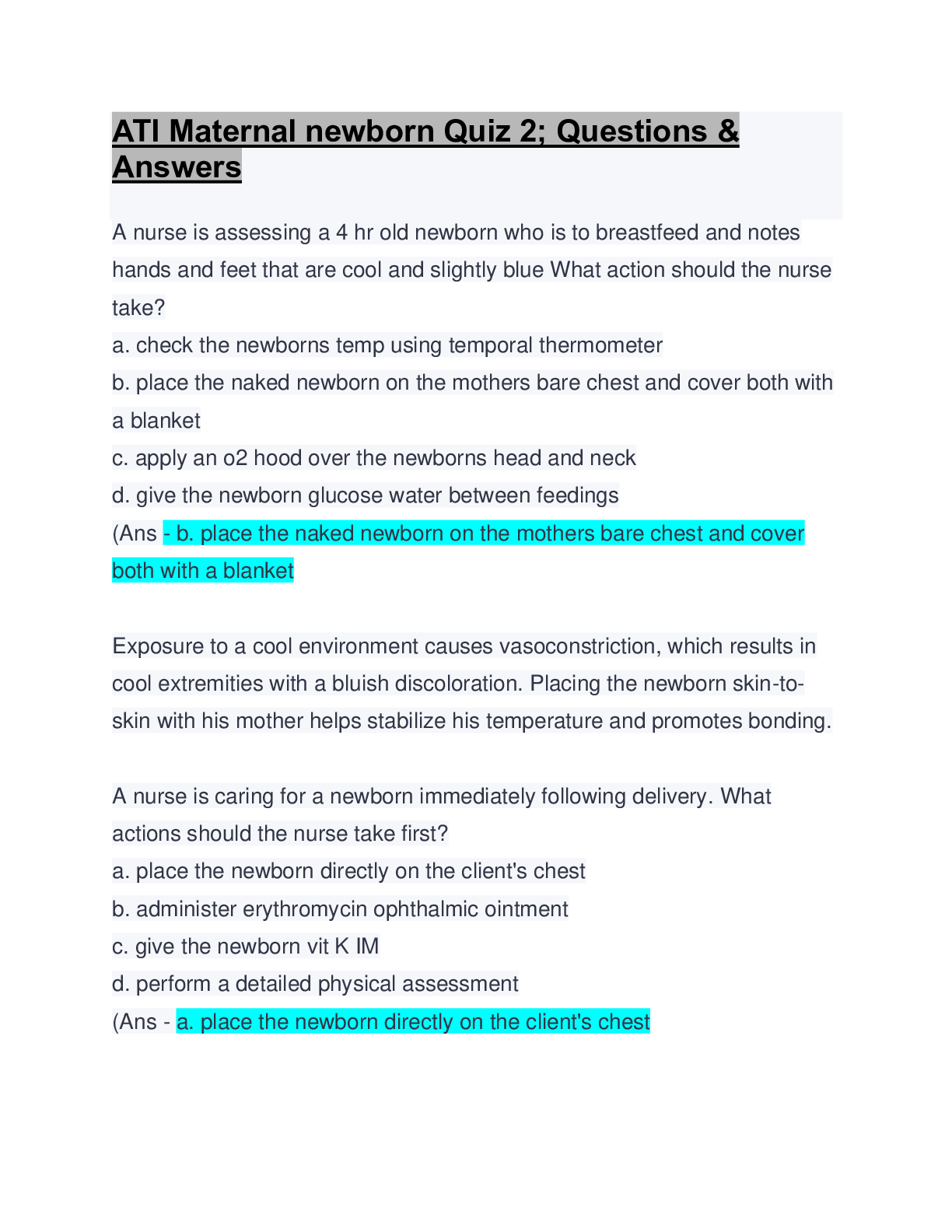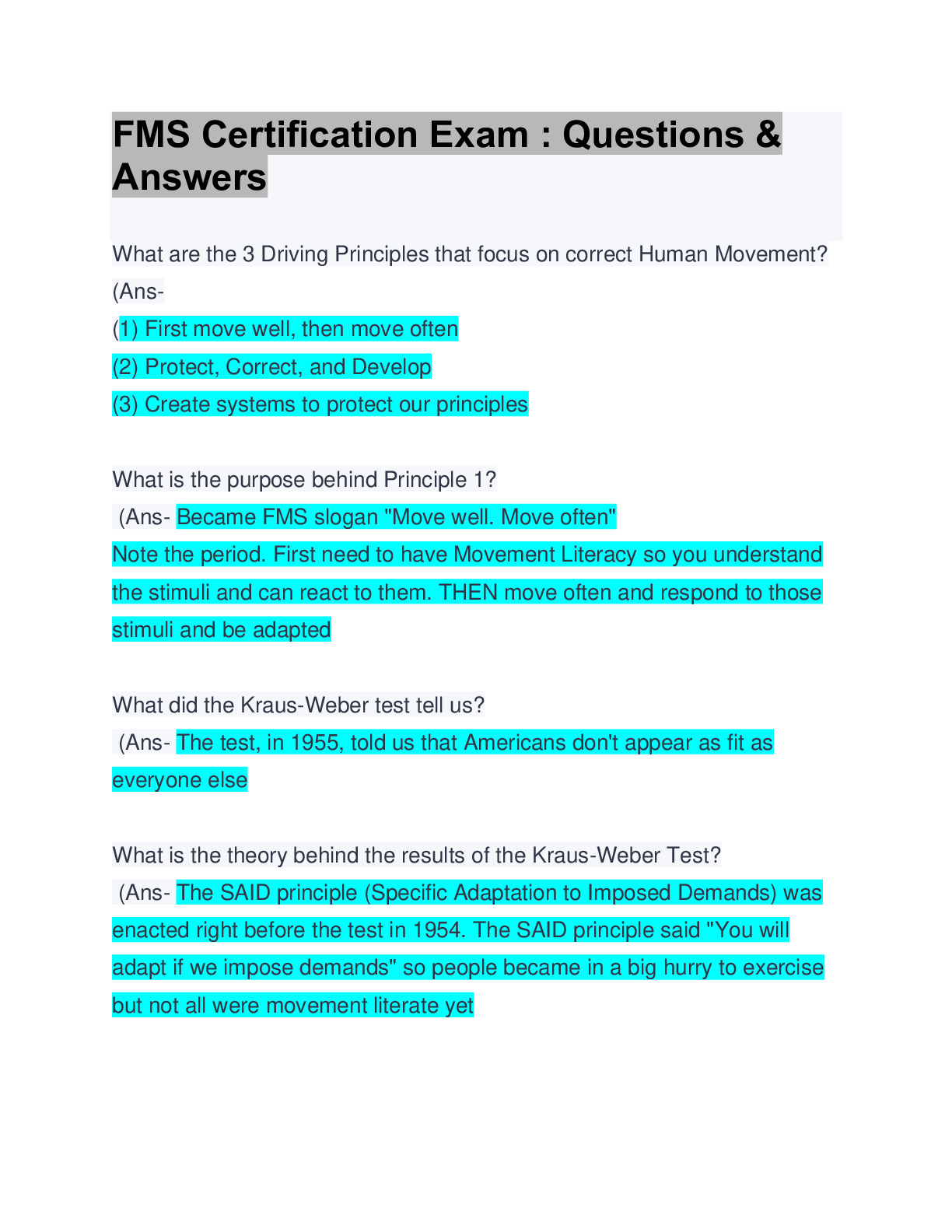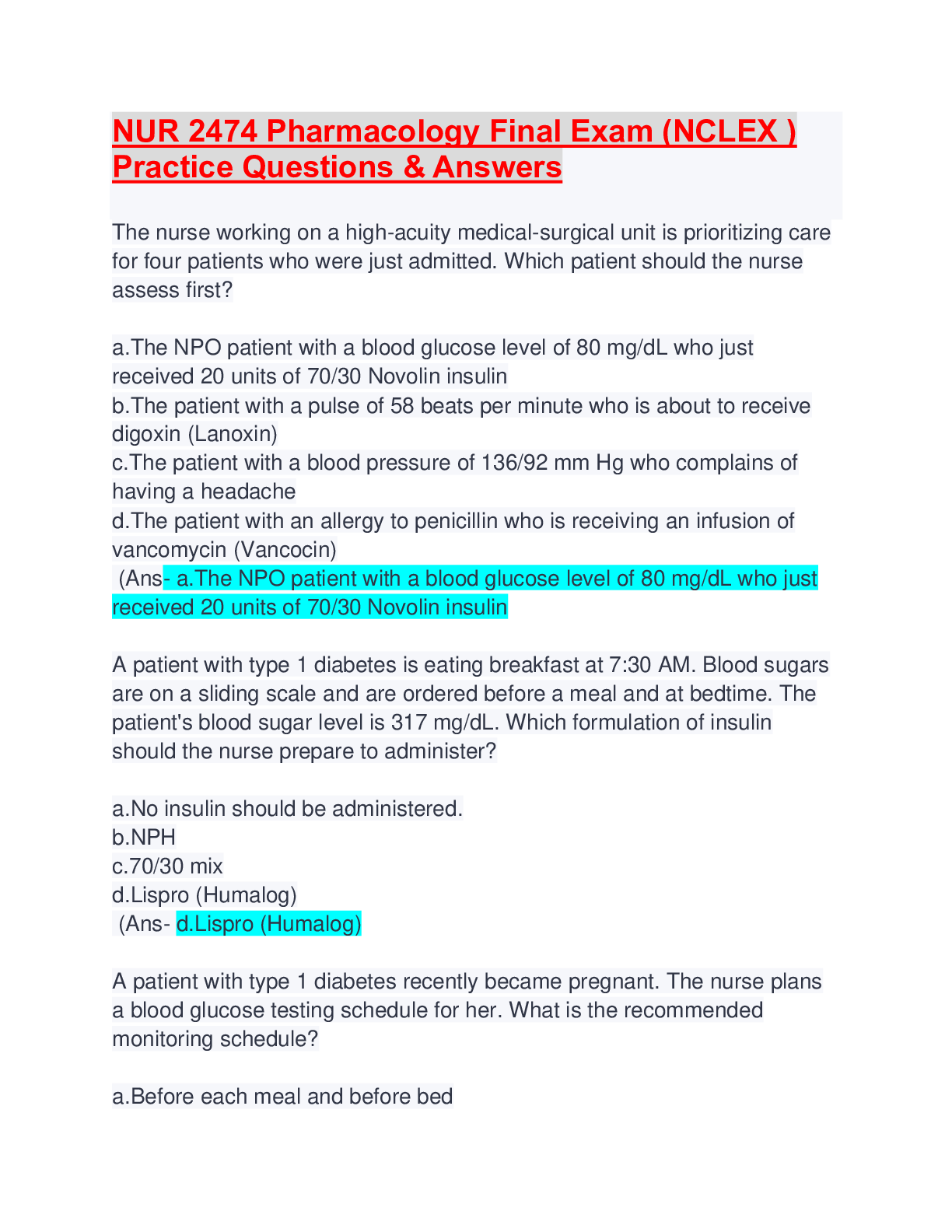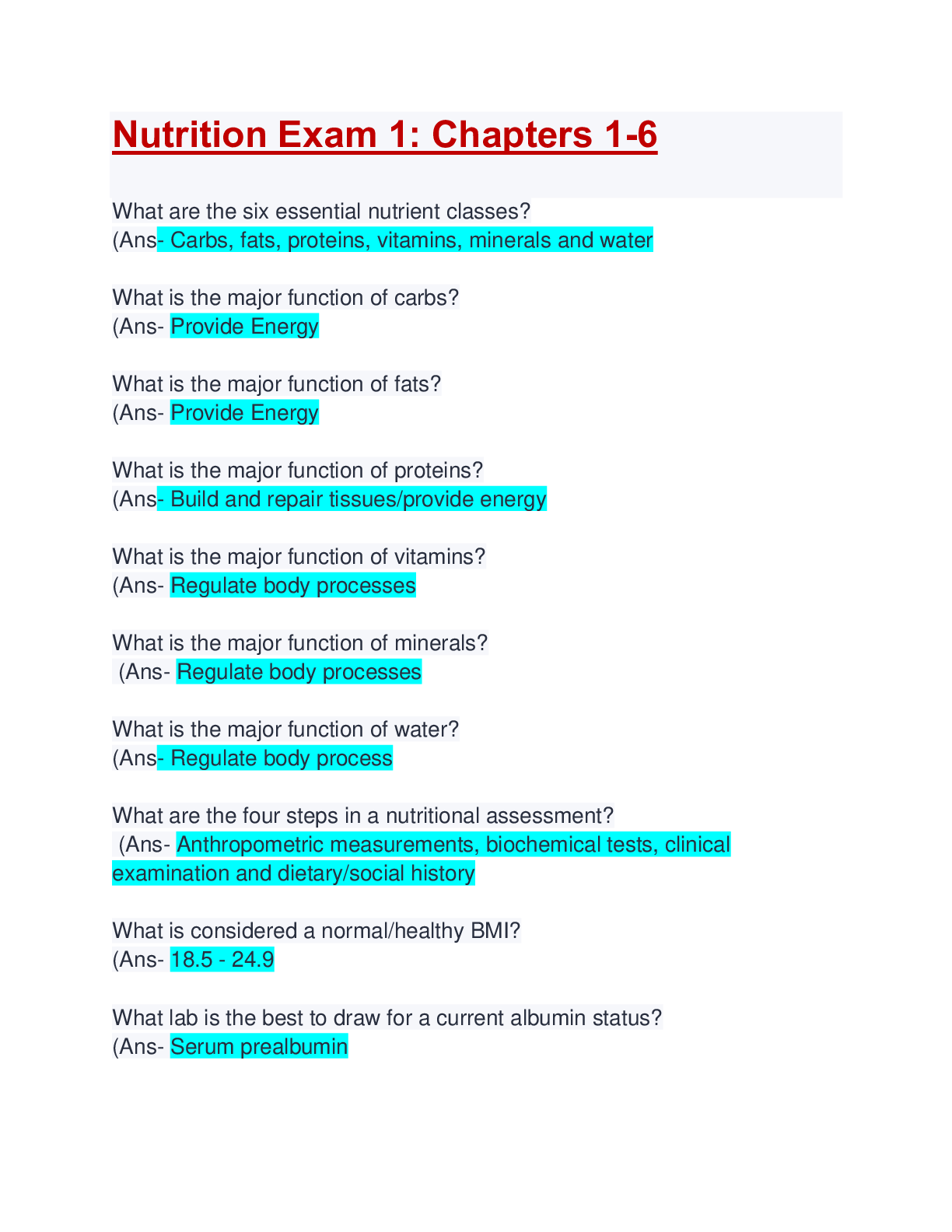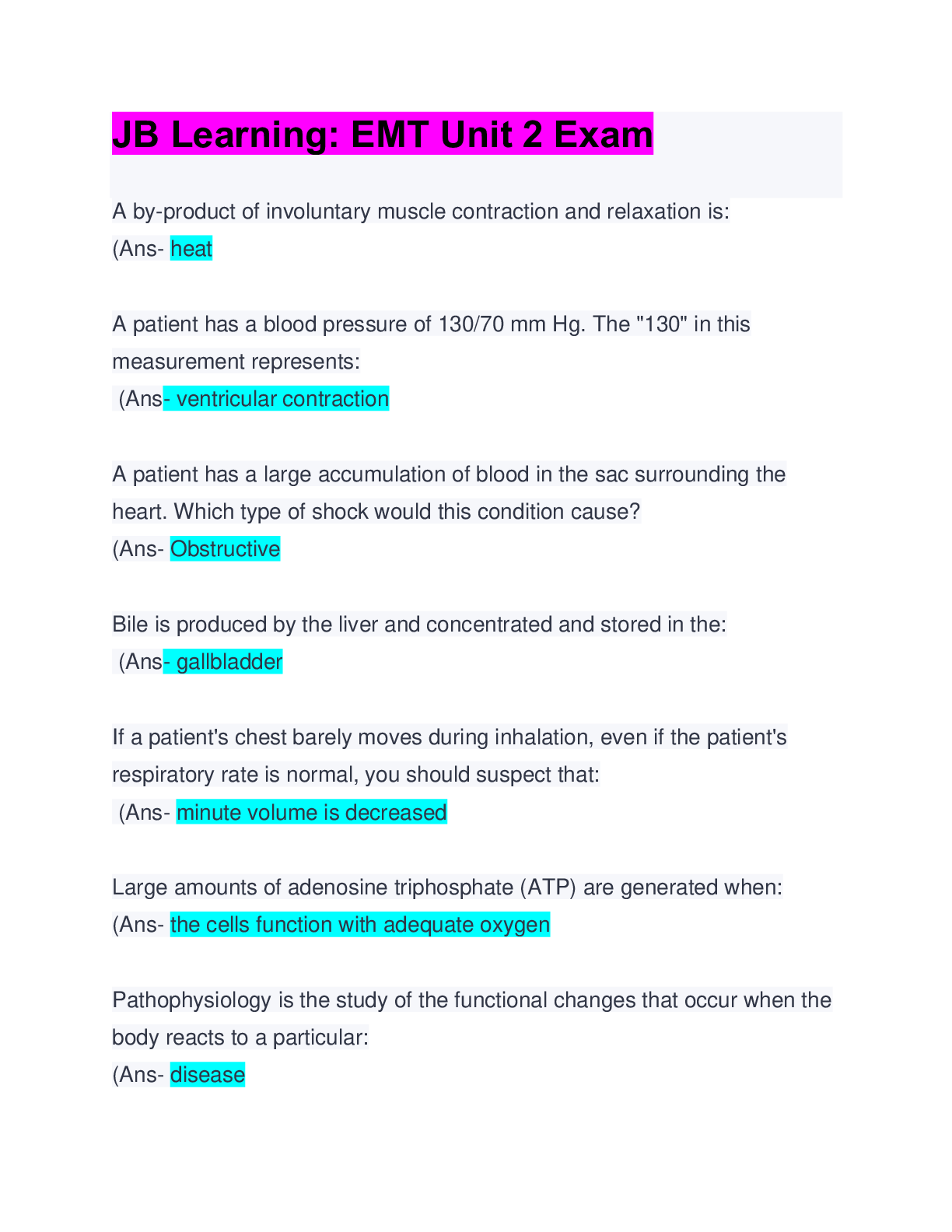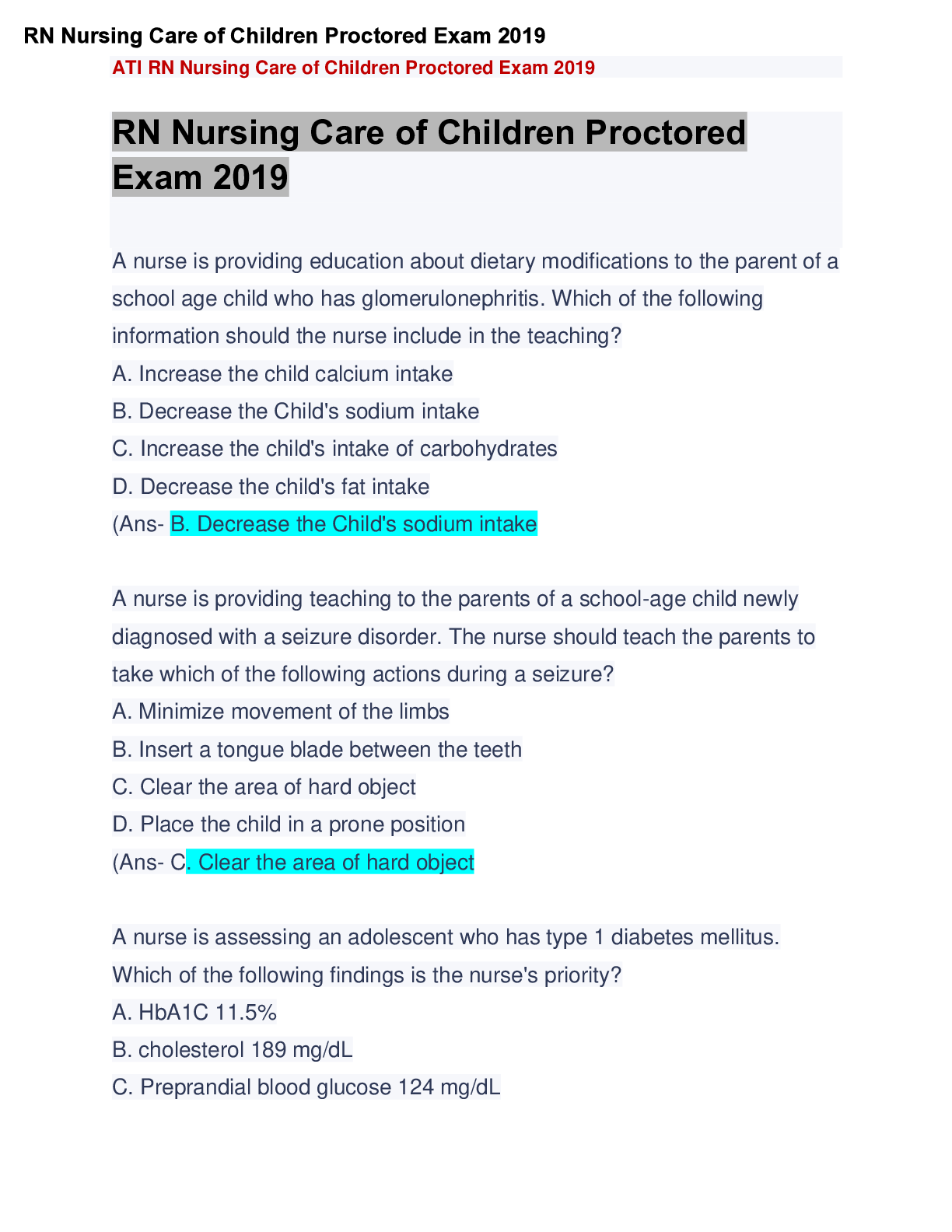Health Care > EXAM > HESI PN Fundamentals Exam/ Questions & Answers: Guaranteed A+/ Latest Updated (All)
HESI PN Fundamentals Exam/ Questions & Answers: Guaranteed A+/ Latest Updated
Document Content and Description Below
HESI PN Fundamentals Exam Which drug does a nurse anticipate may be prescribed to produce diuresis and inhibit formation of aqueous humor for a client with glaucoma? 1 Chlorothiazide (Diuril) ... 2 Acetazolamide (Diamox) 3 Bendroflumethiazide (Naturetin) 4 Demecarium bromide (Humorsol) (Ans- 2 A client receiving steroid therapy states, "I have difficulty controlling my temper which is so unlike me, and I don't know why this is happening." What is the nurse's best response? 1 Tell the client it is nothing to worry about. 2 Talk with the client further to identify the specific cause of the problem. 3 Instruct the client to attempt to avoid situations that cause irritation. 4 Interview the client to determine whether other mood swings are being experienced. (Ans- 4 A client receiving steroid therapy states, "I have difficulty controlling my temper which is so unlike me, and I don't know why this is happening." What is the nurse's best response? 1 Tell the client it is nothing to worry about. 2 Talk with the client further to identify the specific cause of the problem. 3 Instruct the client to attempt to avoid situations that cause irritation. 4 Interview the client to determine whether other mood swings are being experienced. (Ans- 4 The nurse is caring for a client with a temperature of 104.5 degrees Fahrenheit. The nurse applies a cooling blanket and administers an antipyretic medication. The nurse explains that the rationale for these interventions is to: 1 Promote equalization of osmotic pressures. 2 Prevent hypoxia associated with diaphoresis. 3 Promote integrity of intracerebral neurons. 4 Reduce brain metabolism and limit hypoxia. (Ans- 4 A health care provider prescribes 500 mg of an antibiotic intravenous piggyback (IVPB) every 12 hours. The vial of antibiotic contains 1 g and indicates that the addition of 2.5 mL of sterile water will yield 3 mL of reconstituted solution. How many milliliters of the antibiotic should be added to the 50 mL IVPB bag? Record your answer using one decimal place. __ mL (Ans- 1.5 The nurse is caring for a non-ambulatory client with a reddened sacrum that is unrelieved by repositioning. What nursing diagnosis should be included on the client's plan of care? 1 Risk for pressure ulcer 2 Risk for impaired skin integrity 3 Impaired skin integrity, related to infrequent turning and repositioning 4 Impaired skin integrity, related to the effects of pressure and shearing force (Ans- 4 A client has a pressure ulcer that is full thickness with necrosis into the subcutaneous tissue down to the underlying fascia. The nurse should document the assessment finding as which stage of pressure ulcer? 1 Stage I 2 Stage II 3 Stage III 4 Unstageable (Ans- 4 A pressure ulcer with necrotic tissue is unstageable. The necrotic tissue must be removed before the wound can be staged. A stage I pressure ulcer is defined as an area of persistent redness with no break in skin integrity. A stage II pressure ulcer is a partial-thickness wound with skin loss involving the epidermis, dermis, or both; the ulcer is superficial and may present as an abrasion, blister, or shallow crater. A stage III pressure ulcer involves full thickness tissue loss with visible subcutaneous fat. Bone, tendon, and muscle are not exposed. A client is being admitted for a total hip replacement. When is it necessary for the nurse to ensure that a medication reconciliation is completed? Select all that apply. 1 After reporting severe pain 2 On admission to the hospital 3 Upon entering the operating room 4 Before transfer to a rehabilitation facility 5 At time of scheduling for the surgical procedure (Ans- 2, 4 Medication reconciliation involves the creation of a list of all medications the client is taking and comparing it to the health care provider's prescriptions on admission or when there is a transfer to a different setting or service, or discharge. A change in status does not require medication reconciliation. A medication reconciliation should be completed long before entering the operating room. Total hip replacement is elective surgery, and scheduling takes place before admission; medication reconciliation takes place when the client is admitted. A client is taking lithium sodium (Lithium). The nurse should notify the health care provider for which of the following laboratory values? 1 White blood cell (WBC) count of 15,000 mm3 2 Negative protein in the urine 3 Blood urea nitrogen (BUN) of 20 mg/dL 4 Prothrombin of 12.0 seconds (Ans- 1 [Show More]
Last updated: 1 year ago
Preview 1 out of 50 pages

Reviews( 0 )
Document information
Connected school, study & course
About the document
Uploaded On
Sep 16, 2022
Number of pages
50
Written in
Additional information
This document has been written for:
Uploaded
Sep 16, 2022
Downloads
0
Views
55




